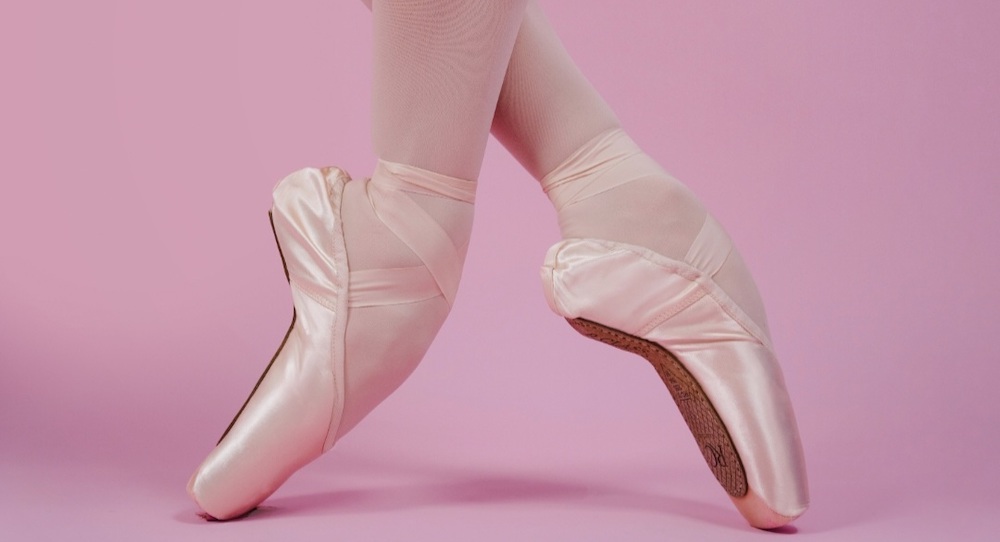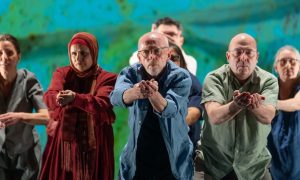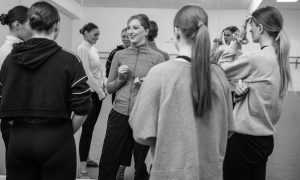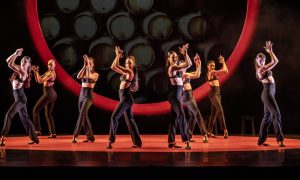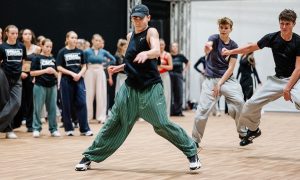In a factory in Moscow, the centuries-old tradition of handcrafting pointe shoes continues. Under the steady guidance of founder Roman Kukushkin, the R-Class factory has 200 employees and creates 100,000 pairs of pointe shoes a year. The shoes are worn by professional dancers in companies like the Mariinsky Ballet, the Bolshoi Ballet, Stanislavsky Ballet, American Ballet Theatre and many others.
The path to creating the R- Class brand has not been easy. When the Soviet Union collapsed, Kukushkin began building his factory and had to learn the ins and outs of capitalism. This was new territory for many in the country who had never owned private property. He describes it as a time of great expectations and creative searching.

During the restructuring, there were many single mothers looking for work. In the R-Class factory, the shoemakers (a job traditionally held by men) are now 80 percent female. Alla Dementieva is one of those women and is respected for her precision and speed. Dance Informa interviewed her through a translator.
What is your title and job description?
“R-Class Pointe Shoe Master. My job description is to handcraft ballet footwear. I feel as if I spread kindness and creativity throughout the world with my work.”
Where are you from? Where did you grow up and attend school? What subjects and activities interested you as a child?
“I grew up in the Soviet Union in the town of Balashikha, which is very close to where the R-Class factory is located. As a child, I was an athlete in school. I was always interested in sports, which, as a woman in the Soviet Union during this time, wasn’t as common. I participated in skiing, basketball, swimming, and volleyball. I tried almost every sport. I think that background actually prepared me to be good in my job, which is physical and requires a lot of dexterity and perfecting of skills.”
Have you always been interested in working with your hands? How did you become involved in pointe shoe manufacturing? Do you have a background in ballet?
“I always wanted to do things with my hands. It was a pure accident that I fell into this work. I was an athlete but had no ballet training. I am beyond blessed to have found this field. There isn’t a day I have regretted my decision.”
How long have you been making pointe shoes? Was the learning process challenging? When did you feel confident in your craft?
“I have been handcrafting pointe shoes for 25 years. No, learning to make pointe shoes wasn’t that hard; it came to me easily. But I think I am rare. As an athlete, I was physically prepared and loved working with my hands. The process of learning to make the shoes quickly and consistently does take at least six months to a year for most of our R-Class Masters. I craft the Classic Collection, which has pleats. Pleats are the hardest part of creating a shoe for most because of the dexterity required.”
How many pairs of shoes do you create in a day? Are there any famous dancers who wear your shoes?
“I average about 12 pairs of shoes a day. R-Class doesn’t have specific Masters make specific shoes for dancers. The R-Class styles are crafted with a team of artisans that make the same style in the same room for consistency. Because of our location, the dancers I have met are Bolshoi ballerinas near us. However, R-Class does have many famous ballerinas all over the world wearing our shoes, both under the R-Class name as well as other brands that we produce shoes for.”
What is it like working in a role traditionally held by men?
“I love it. I prefer the environment I’m in because I like the athletic nature and the way our factory feels like a family.”
Hand-made pointe shoes are physically demanding to produce. Is there anything you find particularly challenging? Did you have to adopt any special techniques to succeed?
“The most challenging part for me, as a woman, in crafting pointe shoes is attaching the leather sole. The varying degrees of smoothness in the leather material present challenges in how they adhere when the sole is pinned to the bottom. It requires a lot of strength to stretch and hold the leather into position.”
In an age of AI and 3D printing, handcrafting pointe shoes is increasingly rare. What does it mean to you to create shoes worn by dancers across the globe?
“I craft pointe shoes with my heart and soul. It gives me immense pleasure to know that my work is appreciated and valued throughout the world. A piece of me is in every shoe — that is special, something that cannot be found in other products.”
What do you enjoy doing in your free time?
“I enjoy reading and cooking. My favorite dish to make is shaved beef with pickles and onions.”
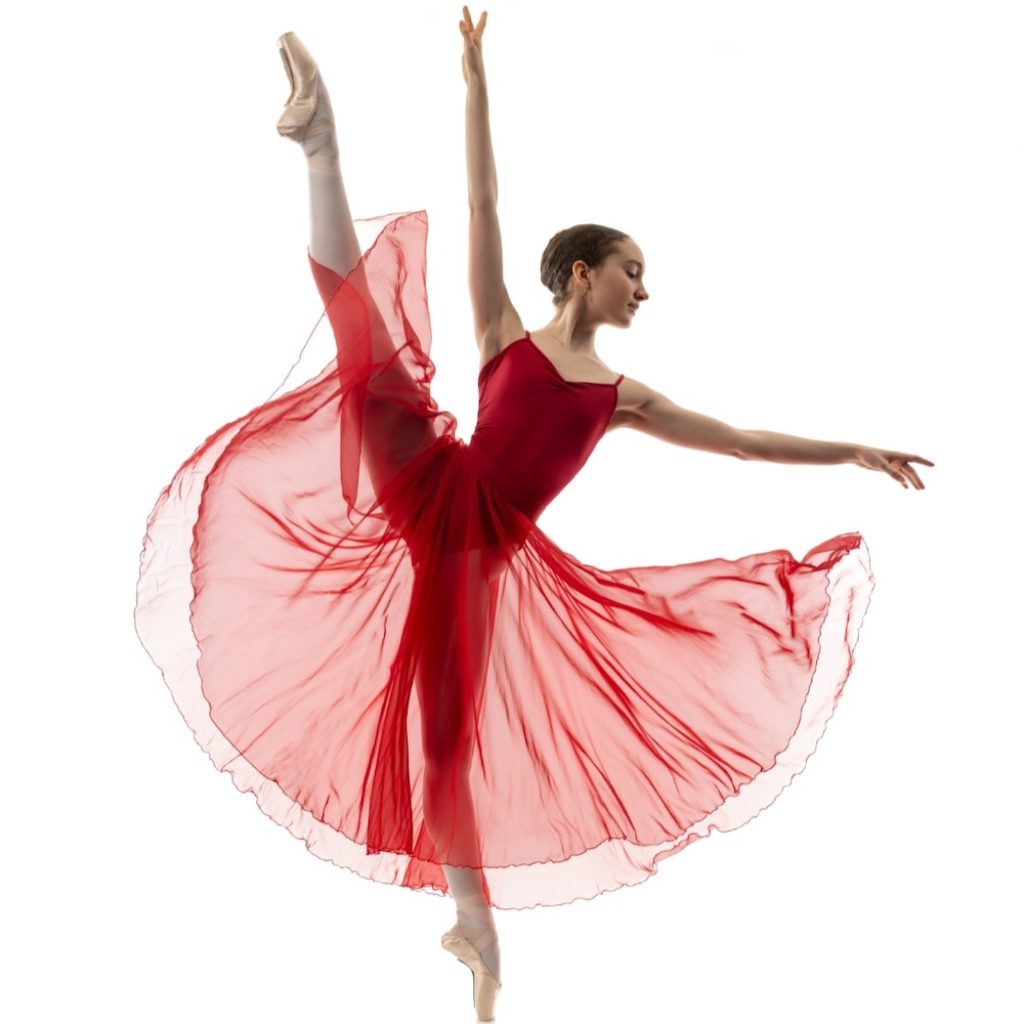
Is there anything you wish the public knew about you or your work?
“Ballet requires immense athleticism and dedication, which are skills that are also required in designing and handcrafting pointe shoes. It’s a hard job but also extremely rewarding. I take great pride in seeing the beauty performed by ballerinas because I feel like I get to participate in the creation of this art form by putting my heart and soul into every shoe.”
Do you have any advice for other women interested in shoemaking?
“You can only make pointe shoes if you love it. You must be physically prepared, have hands that work fast, and work hard. It has been a very rewarding career for me and something I am blessed to have found.”
Kukushkin reverently explains, “The story of one’s life and creative journey reminds me of a thick thread woven from myriads of thinner yarns and occasions which set up the destiny. An artisan is the main character of ballet shoe production. The artisan’s hand and the artisan’s understanding. The ballet shoes are the most complex type of shoes because they demonstrate a synergy of contradicting features.”
If you want to find out more about R-Class shoes, visit:
USA: r-class.us
Europe: r-class.bg
By Mary Carpenter of Dance Informa.


